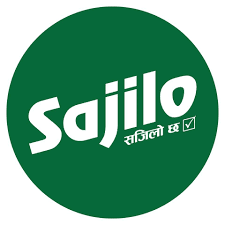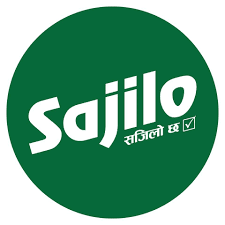Following COVID, we’ve seen a surge in both commercial and experimental films like ‘Kabaddi-4’, ‘Mansarra’, ‘Dimaag Kharab’, ‘The Red Suitcase’, ‘Boksi Ko Ghar’, ‘Farki Farki’, and ‘Gau Aayeko Bato’. These films vary, with some sticking to traditional storytelling while others exploring new and experimental approaches.
According to industry insiders, the Nepali movie landscape hasn’t fully realised its potential. Directors, writers, festival organisers, and critics describe an industry muddled between fresh storytelling and repetitive formulas—yet they hope for new talents amidst systemic challenges.
Mohan Rai, director of Middleway Films and festival manager for Nepal European Union Film Festival (NEUFF) 2024, notes that both experimental and traditional formulaic movies are currently being produced.
He observes that while the industry shows signs towards growth, there is a significant need for improvement in filmmaking techniques, storytelling, and direction. Rai adds, “Both independent and commercial films are important and should complement each other rather than fighting against one another.”
Yangesh, a writer and former president of the Film Critics Society of Nepal (FICSON), supports Rai’s views. He says Nepali cinema is heading in the right direction with more diverse film styles. He points out that films like Shambhala and The Red Suitcase making waves at international festivals are promising signs for the industry.
Rai adds, “It’s great to see new and young filmmakers emerging with both short and feature films. They’re bringing in diverse stories and characters from various places, languages, and storylines. At this year’s NEUFF, we received 52 Nepali films in the short film category, a big improvement in comparison to the past.”
Ramyata Limbu, the director of the Kathmandu International Mountain Film Festival (KIMFF), sees a positive trend in the industry, “Rather than good or bad, the key factor is that people are actively telling stories.”
As per her, at KIMFF 2024, around 30 films and documentaries were submitted to the Nepali panel. These entries showcased a wide range of narratives and highlighted the diversity in storytelling within the industry.
It is evident that the changes are happening, but one wonders how strong the winds of change are blowing.
Yangesh opines that despite the new wave of young filmmakers and diverse storytelling, progress is slower than it should be—primarily due to a lack of government support and infrastructure.
He further adds that the government’s policies have not been supportive, often imposing taxes and restrictions rather than fostering creativity.
“Despite promises, a film city in Dolakha hasn’t materialised, and Kathmandu lacks a decent shooting studio. Private film colleges exist but don’t produce enough skilled technical workers. The government hasn’t organised any significant film festivals or provided subsidies for theatres. Without recognition from banks, the film industry struggles to secure loans and investments,” says Yangesh.
The theatres are closing, and the government is not offering incentives for opening new ones or for promoting films at international festivals. Yangesh argues for strategic government planning, private sector investment, and the encouragement of original films.
The challenges facing the Nepali film industry are indeed multifaceted. Shanta Nepali, a director, producer and cinematographer, argues that the industry has not been developed sustainably for the long term. She stresses the need for institutional support from the government to help art films reach global platforms. Despite the growth in community funding and international festival entries, she believes the industry requires stronger support to ensure its sustainability.
Dipendra Lama, a film journalist turned director, criticises the trend of casting high-priced male stars and relying on them for promotion and funding rather than focusing on the film’s quality. Lama, who is also chairperson of FICSON, emphasises that if a film is made with honesty and effort, it can succeed without a group of big-name stars like ‘Boksi Ko Ghar’.
Lama also addresses the issue of repetitive storylines in Nepali cinema. He notes that some movies, like ‘Farki Farki’, rely on old formulas and similar plots, lacking innovation. He advises actors like Anmol KC to choose better scripts and step out of their comfort zones to avoid an unremarkable career. According to Lama, the main challenge is making good films. If a film is strong, it will succeed regardless of external factors.
Filmmaker and journalist Sampada Malla, who also works as a creative director of Sarwanam Theatre Group, points out, “Filmmaking isn’t just a hobby. It is a serious career that can influence and inspire millions of people.”
Like any other profession, filmmakers should learn to hone their skills. In Nepal, there’s a tendency to rush through film production without doing enough research or putting in hard work, which Malla sees as the greatest obstacle.
Sarita Sah, a prominent figure in Nepali film and theatre with over 11 years of experience as an actor, writer, and director, carries a different perspective.
According to Sah, Nepali cinema’s biggest challenge is its lack of inclusivity and diversity. She notes that most movies are made with and for audiences from the Hilly and Himalayan regions, neglecting the voices and stories of the Tarai region.
She argues that this hampers the industry’s ability to fully represent Nepal’s cultural diversity. Sah emphasises the need for well-informed and empathetic directors and filmmakers to bring out the potential of the Tarai population and every region in cinema.
Prabhakar Gautam, a film critic and enthusiast, points out that the Nepali film industry remains largely fixated on so-called ‘mainstream’ and commercial movies. He highlights that films like ‘Kabaddi’ and ‘Jatra’'s success underscore the industry’s inclination towards branding, often favouring sequels over exploring new creative avenues, which poses a crucial challenge.
Gautam notes that out of a considerable number of films produced each year, only a handful—approximately 8-10—receive positive responses either at the box office or from critics. He emphasises another challenge: creating good films does not always guarantee a substantial audience. For instance, despite being a well-made film, ‘Ainaa Jhyal Ko Putali’ did not achieve much success, prompting the industry to rethink how to attract audiences to quality films.
He also raises concerns about the younger generation of filmmakers lacking support from media highlighting power play and disparities in access to resources and influence.
Despite these challenges, there are some promising opportunities for Nepali cinema. The growing interest in diverse stories and the emergence of young filmmakers bring fresh perspectives to the industry.
Lama observes that the Nepali film industry has made significant progress since 2014, expanding its market and breaking previous limits. For instance, ‘Kabaddi 4’ recently grossed over 23 crores, which was unthinkable ten years ago.
The growing interest of the Nepali diaspora in Nepali films is also a positive sign. He is optimistic about the future, noting the introduction of new technology, young talent, new theatres, and increased audience appreciation.


